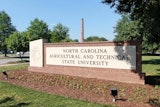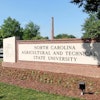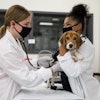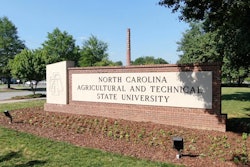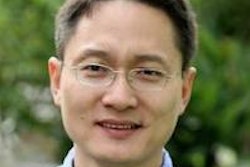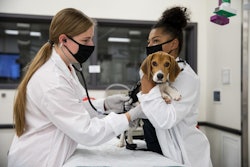Operation STEM
By Dina Horwedel
Hispanic organizations are on a mission to get more students to pursue the sciences.
For the first time in the 30-year history of the Society for Advancement of Chicanos and Native Americans in Science, the organization is
focusing on the nurturing of scientific talent in preschoolers and very young children.
SACNAS, whose mission is to encourage Chicano/Latino and American Indian students to pursue graduate education and advanced degrees in the sciences, has long focused on K-12 teacher education to prepare students for science, technology, engineering and mathematics studies on the college level. Until now.
Until now, because the country’s growing Hispanic population has not translated into increasing numbers of Hispanic students entering or graduating with degrees in STEM disciplines. Organizations such as SACNAS and the Hispanic Association of Colleges and Universities want to change that, recognizing that STEM fields hold the key to America’s future competitiveness.
According to a recent study, Black and Hispanic students are entering the STEM fields, but they aren’t earning enough credits to graduate in six years. The report, “Increasing the Success of Minority Students in Science and Technology,” examined six years worth of U.S. Department of Education data for 12,000 students who entered college in 1995. Black and Hispanic students were able to complete the STEM “weeding out” courses, says Dr. Eugene L. Anderson, associate director of the American Council on Education’s Center for Policy Analysis and co-author of the report. But after the third year, a significant percentage of those students had dropped out. Only 62.5 percent of Black and Hispanic STEM students completed their coursework, compared to 87 percent of White students and 95 percent of Asians.
Dr. Antonio Flores, HACU’s president and CEO, says his organization has conducted a number of pilot programs in middle and high schools to increase Latino enrollment in STEM fields. A five-year program, funded by NASA and held at 10 schools nationwide, offers “conclusive proof that with the right investment and the right tools, Hispanic kids are able to complete college preparatory high school programs as well as enroll in [STEM] fields at a higher rate,” he says.
The Battle Is on the Supply Side
In Flores’ opinion, budgetary issues are the primary reason for the lack of college prep courses, and he points to California as an example of a budget-borne roadblock.
“Proposition 13 caps taxes for real estate property, which is one of the main sources of funding for public schools,” he says. “This is especially a problem in inner cities, where property values are lower than other areas. It’s a Catch-22. There are more cuts in places where more Latino kids are coming to school. We need to push for more investment in these schools and push the private sector to provide teachers in public schools.”
Flores says semi-retired or part-time engineers and scientists need to lend their expertise as teachers, and there needs to be an emphasis placed on getting math and science majors to enter the teaching fields, “especially in secondary schools.”
Once kids do qualify for college, funding becomes another hurdle. According to the National Hispanic Scholarship Fund’s data, many students don’t complete their education due to a lack of financial resources.
But “the battle,” says Flores, “is on the supply side. We need more and better college-prep programs for math and science education, and we need to secure teachers in the math, science and engineering fields.” On the family side, he says, “We need to develop a culture of expectation for students to go into those fields. We need to triple the number of people in the STEM fields to gain equity with the rest of the population. We realize more than half of the battle has to be won in K-12 to create the critical mass to get kids into college.”
Once in college, SACNAS’ Judit Camacho says there needs to be more opportunities for students to do research on the undergraduate level. The hope is that these students will eventually go on to postdoctoral studies and then into leadership positions where they can serve as role models for future generations.
The Ingredients for Success
One person who has already achieved role-model status is Dr. Steve P. Castillo, dean of engineering at New Mexico State University. He says being an example for others is the most satisfying part of his job.
“I deal with a broad range of students — some extremely well prepared and some not so well prepared,” he says. “My role goes beyond mentoring kids once they are in college. I implement strategies to reach out to young people to influence their decisions [about schooling].”
NMSU is among the top 10 programs graduating Hispanics on the undergraduate and graduate levels, according to Diverse’s Top 100 rankings (see Diverse, June 1 and July 13). The university’s early recruiting and outreach efforts almost certainly play a role in its impressive graduation numbers.
“We do partnering with public school systems and outreach to bring kids onto campus to attend classes in the summer and for extended periods of time to try to give students an idea of what they’ll encounter once they’re on campus so they know how to navigate and don’t head straight to the parking lot to drive back home once they are here.” Castillo says.
Camacho says teachers need to consider the trajectory a child takes in developing a scientific mind and continue to nurture it. That’s why, in addition to preschool and K-12 programs, SACNAS is developing examples of culturally relevant science, such as the Mayans’ contributions to mathematics.
“There is often a lack of expectation on the part of teachers or others in children’s lives about their performance in [STEM] fields,” she says. That’s why it’s essential that students receive encouragement, preparation and mentorship before they reach college, adds Camacho.
“One half of all post-docs are foreign born. Yet, there is an increasing population of Latinos and we are not utilizing our human resources and capacity,” Camacho says. “We will have huge populations of under-utilized populations. Right now what keeps us competitive is science and technology. Without competition our economy will fall behind.”
Start Young and Stay Focused
In the pursuit of engineering degrees: Two students share their experiences
Kiki Robles, a fifth-year mechanical engineering major at the University of Miami, echoes the sentiments of higher education professionals who say starting young and keeping the end in sight is important when pursuing a STEM major.
She says she was encouraged by a high school math teacher to develop her skills “in math and as a person.” And although it hasn’t always been easy as a Hispanic woman in the sciences, Robles says she has encountered more encouragement and support than resistance in her engineering pursuits.
Miami’s mechanical engineering department trails its other engineering programs in the number of women enrolled, so Robles tries to keep a high profile and establish close relationships with her professors. Set to graduate this spring, she plans to stay at Miami and earn a master’s degree. In Diverse’s Top 100 rankings, the university ranked sixth among all institutions for conferring engineering master’s degrees to Hispanics in the 2004-2005 academic year. And although Robles is not technically a first-generation college student, she will be the first in her family to earn a master’s degree.
“If there was one piece of advice I would give kids, it would be to keep on fighting,” she says. “Many times when I’ve been down and out, there were times I haven’t been able to see the light. But you have to take the punches and keep on going.”
It was a sixth-grade science class in his Los Angeles school that got Luis Gonzalez interested in engineering. His teacher had the class build and launch rockets, and that experience propelled Gonzalez from California to the East Coast, where he graduated in 1992 with a bachelor’s degree in aerospace engineering from the Massachusetts Institute of Technology.
Gonzalez says his mind was made up after that pre-teen experience. From then on, “The focus in junior high and high school was that I had to do well,” he says, noting that both his teachers and parents encouraged him. “My parents did not push school nor did they overwork me, but they respected my teachers a great deal and made me understand how important school was. They never actually verbalized it until much later, but we came to this country [from Mexico] so that we could get a quality education.” Gonzalez was actively involved in the Math, Engineering and Science Association (MESA) and attended engineering-oriented events at local colleges, which provided exposure to the discipline. It was in high school that an adviser suggested he apply to MIT’s summer engineering program, called Minority Introduction to Engineering and Science (MITES), designed for students entering their junior year in high school. Admission into the program is said to be more competitive than admission into MIT itself, but Gonzalez applied and was accepted. He says that experience also had a profound impact on the direction his life would take, spurring him on to apply for undergraduate admission at the university.
“To see all of the resources available at MIT was amazing to me,” he says. Yet, he confesses that he didn’t feel prepared for the rigors of MIT as a freshman, even though he was a top scholar in high school. Like many first-generation college students, he says he didn’t know how to take advantage of all of the resources the institution had to offer, and he looked at the professors as people who were there to give him work, rather than help him.
But with age comes wisdom, and before long he realized the importance of role models. Consequently, Gonzalez and his wife, Luisa, have tutored and assisted Hispanic students with college admissions paperwork. “I see the boost of self-esteem students get when they see others in these roles,” he says. “Not having many graduate students or professors that I could relate to from my background was a little tough.”
Now working in Phoenix in the information systems field, Gonzalez says the analytical and engineering skills he developed have opened many doors for him.
“There are all kinds of people and all kinds of degrees,” he says. “What matters is that you must be able to learn on the job, and you must have hard skills.”
© Copyright 2005 by DiverseEducation.com
